Sharing is caring!
Does your Shakespeare unit need a bit of a shake-up? Maybe it’s introducing Shakespeare and kicking off the unit that needs a little change? If so, adding in poetry at strategic moments may be the way to go!
This post includes poems to use as part of an introduction to your unit on Shakespeare to introduce the man, poet, and playwright in and beyond his own lifetime.
This is the first in a series of posts about poetry and your Shakespeare unit. Coming up are posts about specific plays and specific poems to pair with those plays, including Macbeth, Romeo & Juliet, Hamlet, and Twelfth Night! Plus, another post about a new approach to teaching Shakespeare’s sonnets.
Introduction to Shakespeare Unit
If this is the first time students are encountering Shakespeare you’re likely to include an introduction to the man, his plays, and the time and place in which he is writing. For students in grades 9 and 10, that usually involves some historical context such as the Globe Theatre, Queen Elizabeth I, as well as information about the conventions of performances.
This list does not include any work by Shakespeare himself, since that will be part of another upcoming post. Instead, these next poems feature the work of contemporaries of Shakespeare, plus those writing long after his time.
5 Poems to Introduce Shakespeare and His Times
- In Remembrance of Master Shakespeare by Sir William Davenant
- Written just a few years after Shakespeare’s death in 1616
- John Warren’s Commendatory poem to the 1640 version of Shakespeare’s sonnets (see text of poem below)
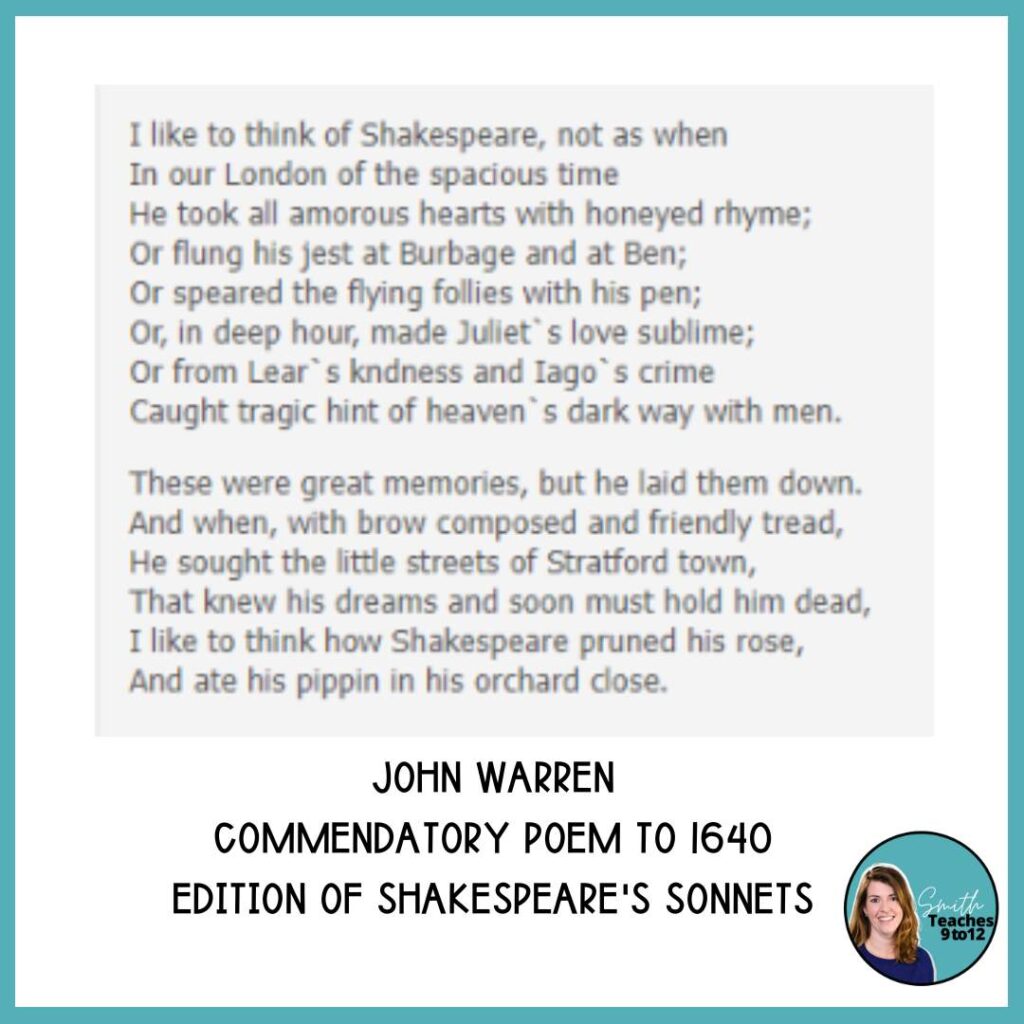
- To Shakespeare by Frances Anne Kemble
- Poem from 1867 about performing Shakespeare as an actor
- Shakespeare by Matthew Arnold
- A tribute to Shakespeare the poet and playwright from the 1840s by a well-known Victorian poet
- Analysis of the poem can be found here
- Guilielmus Rex by Thomas Bailey Aldrich
- Guilielmus is a form of William and Rex means King, so the poem is in honor of Shakespeare as a king of writing
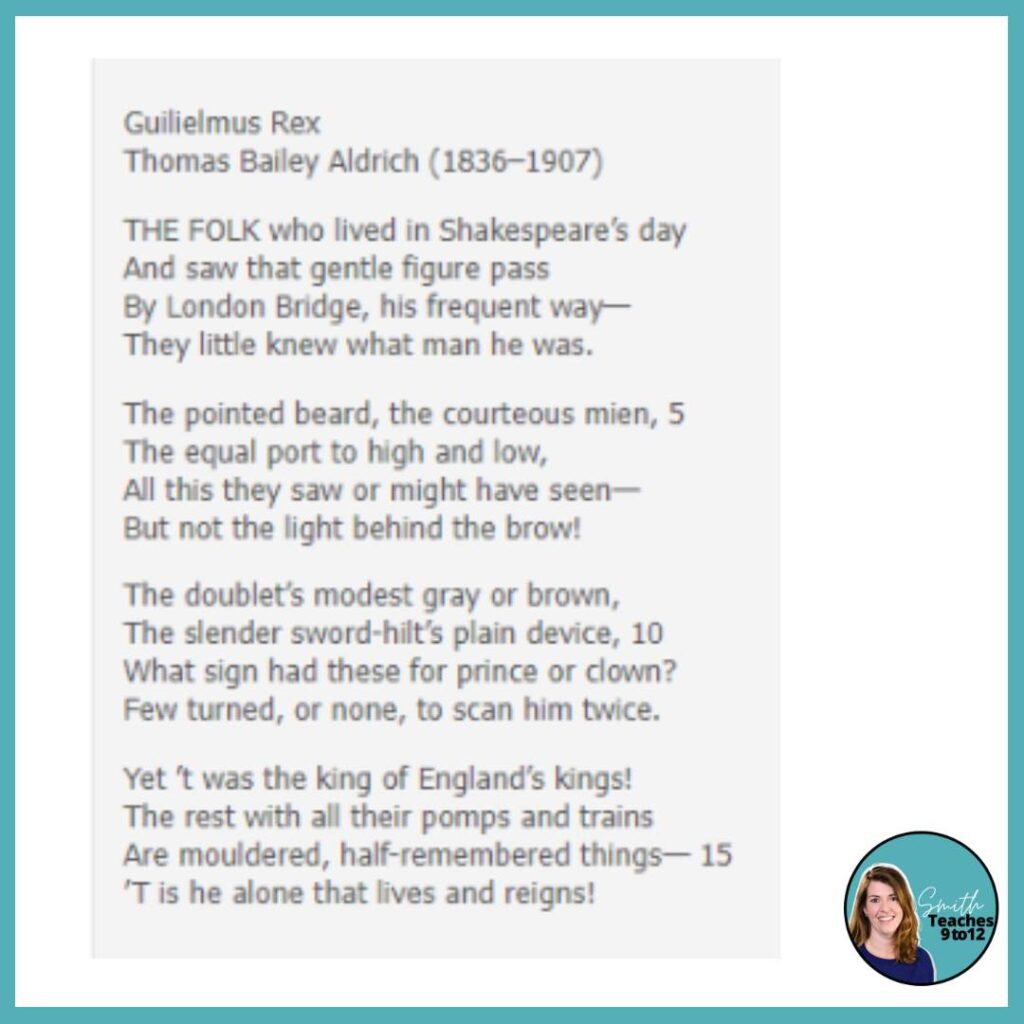
Another introductory activity I like to complete with students that can be used to explore language, with the potential to create poetry, is this set of cards with phrases coined by Shakespeare.
Set of 42 cards with different phrases coined by William Shakespeare. Option to play a quick drawing and guessing name like Pictionary™ or use it for an inspired poetry writing activity! Each card includes play, act and scene reference e.g. cold-hearted (Antony & Cleopatra 3.13). Great to transition into or out of Shakespeare unit. Works for lessons on diction (connotation and denotation), figurative language, or just for a fun, brain break for students!
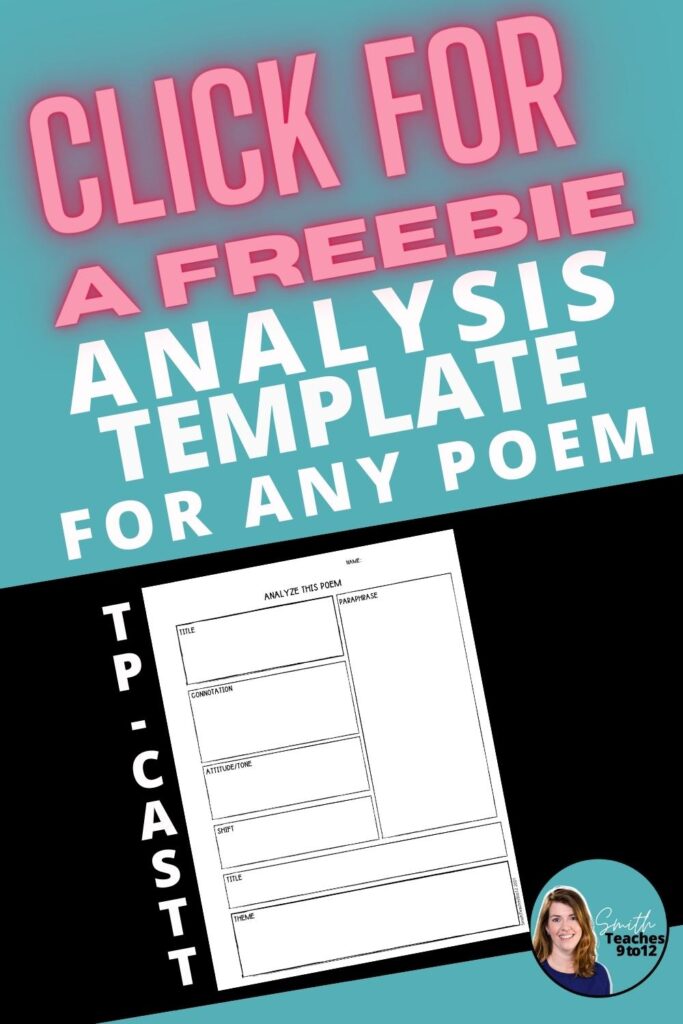
Teaching these poems
With these first poems I shy away from deep analysis and instead focus on the technique of note and notice.
There really are a load of options to deliver a lesson with these poems. Here’s a tried-and-true method to structure the lesson, which can be done as a whole class, independently, or in small groups.
- Read the poem. (This can be done aloud to the class or solo.) I always suggest providing a copy of the poem to students.
- Identify and define any unknown words.
- Review the rhyme structure, if any. Mark out the rhyme scheme. (This helps to see where there might be emphasis within the poem, what words/lines rhyme and what might the effect of that be on the meaning of the poem?)
- Use the note & notice approach to the poem. What stands out? This can be lines, words, a specific sound or image. And part of this is to get students to indicate why it stands out to them.
- Then, you can work through a graphic organizer such as a TP-CASTT. Download your free copy of a TP-CASTT and guiding prompts for it here. For these intro to the unit poems I don’t always go this far with it but it’s always an option for more analysis.
- When there is some understanding of the poem’s content and structure, shift to how this can relate to Shakespeare and his time.
Another option to further explore poetry and Shakespeare is to introduce students to literary theory.

Check out this New Historicism lesson that explores the writer and writing in their time and space. Introduce this literary theory with a full presentation, keyword definition, guiding questions, EXTENSIVE teacher notes to prepare you to be comfortable leading the lesson, plus an example text and analysis.
If you plan to revisit the poems, make sure students keep a copy of their initial notes. A good way for this is to make a copy of the poem with adequate space around the poem for notes. In a small group, this could be a printed copy on larger chart paper to allow for multiple comments from different group members.
TEACHER TIP: If completing as a small group, get students to write in different colors. They can record their name in their color too. This provides a quick visual accountability check for who is contributing and the level of their contributions. This is particularly helpful when gathering info for conversations and observations that might contribute to a student’s grade on the activity.
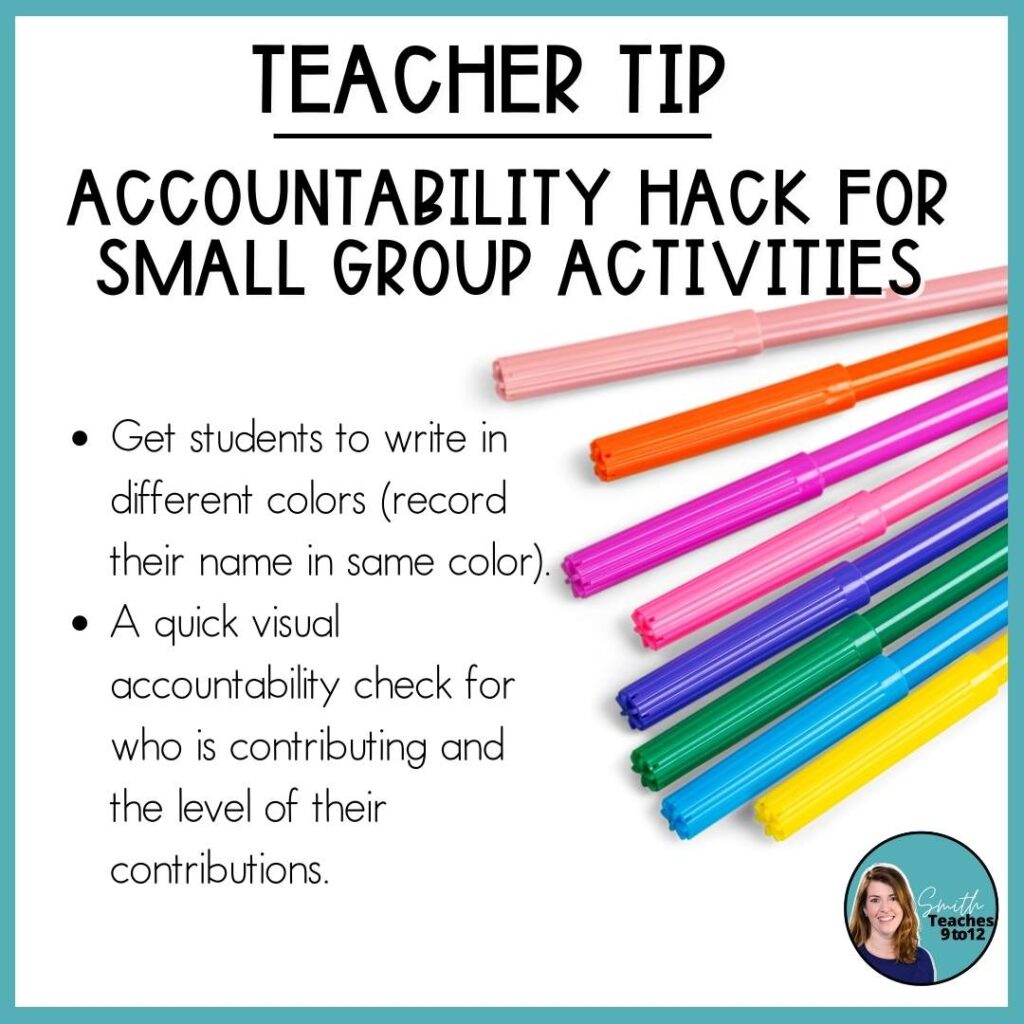
Wondering how else you could use poetry in your drama or novel study? Check out this post with many ways to incorporate poetry into ANY fiction lesson or unit!



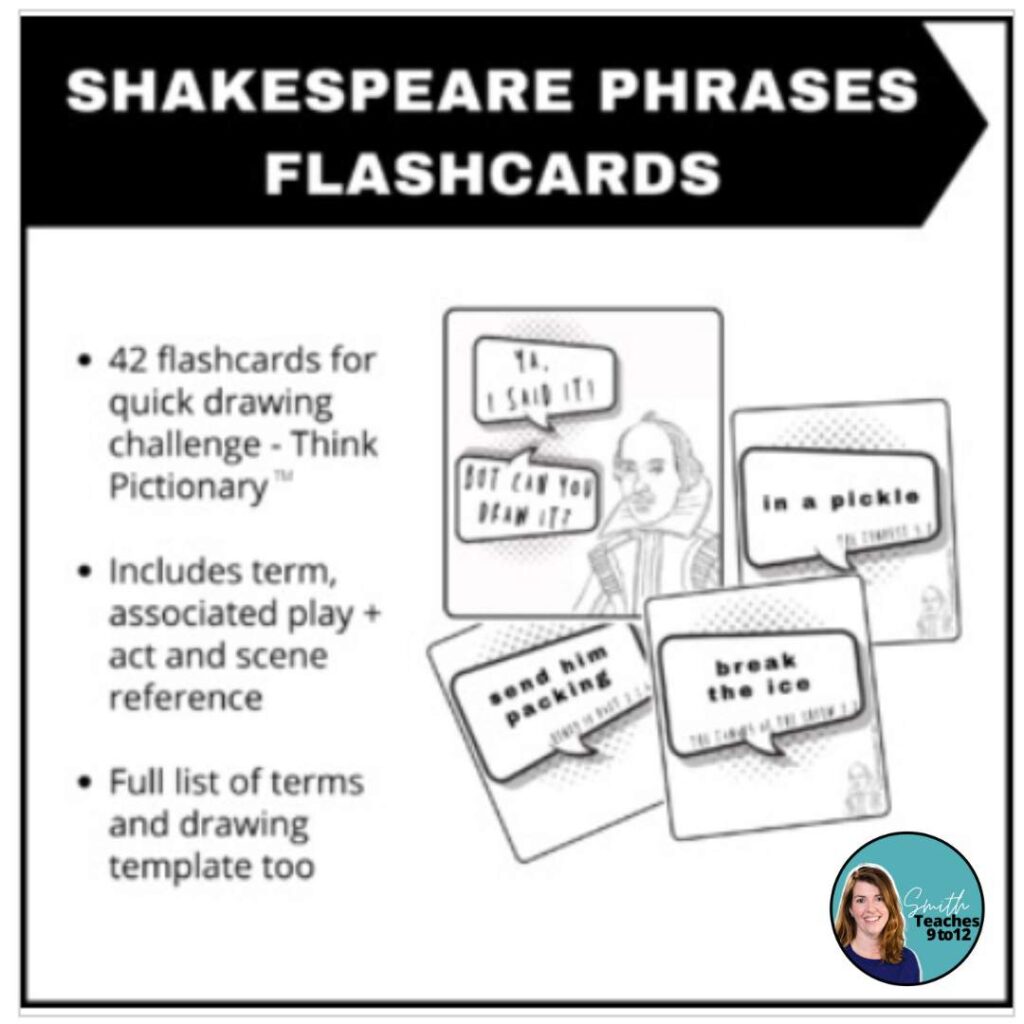


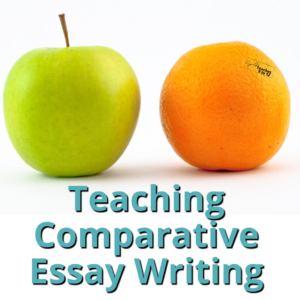
3 Responses